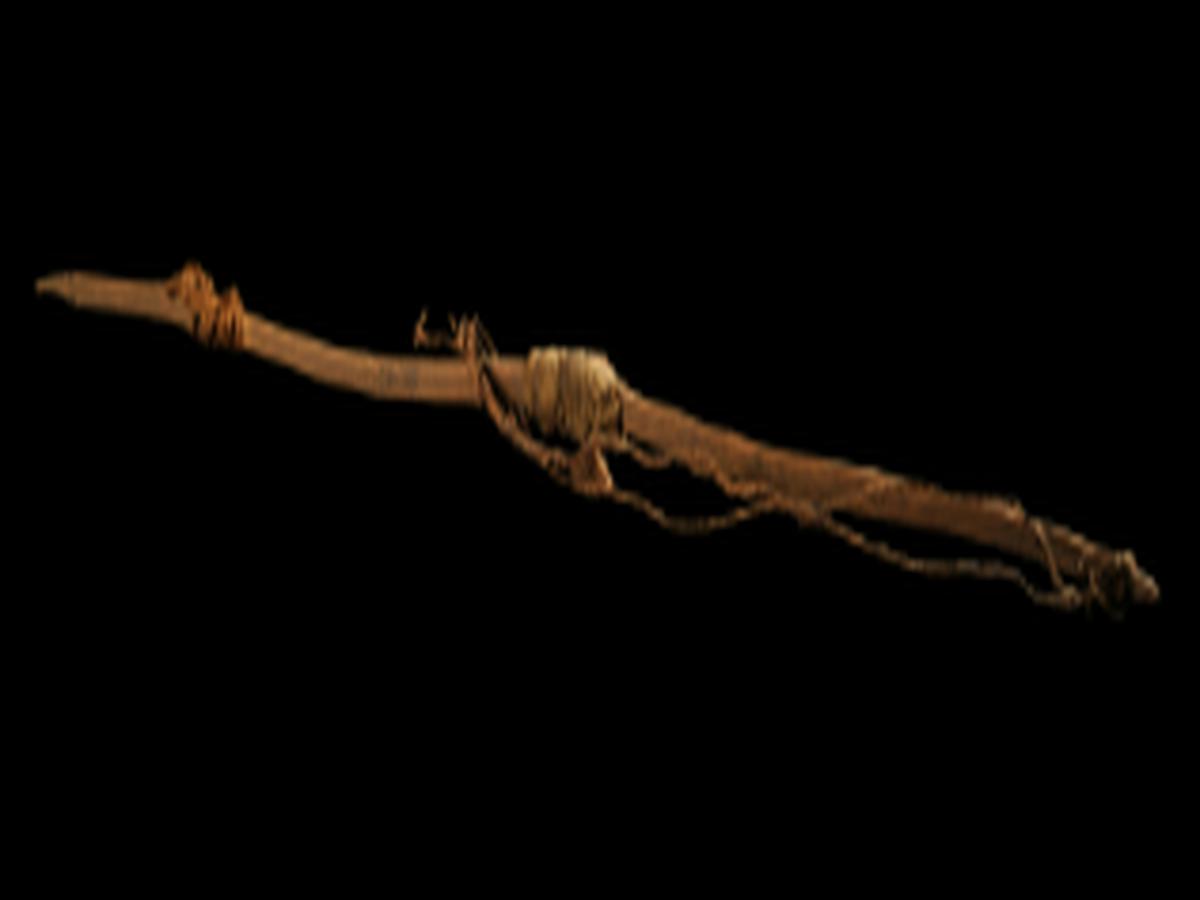State
Tribe Name
Art Type
short description
The Bati-Buli is a time-honored pellet bow of the Khond, a native tribe found mostly in eastern India, especially Odisha and Andhra Pradesh. This single bow is a symbol as well as a testimony of the poignancy of the Khond with their environment. The Bati-Buli has been contrived simply for having small projectiles or pellets shot, unlike normal bows for arrows.
Thumbnail

Filter Postion
Right
Filter Background
Off
Theme
Filter Header Image

content
Image

description
The Bati-Buli is a time-honored pellet bow of the Khond, a native tribe found mostly in eastern India, especially Odisha and Andhra Pradesh. This single bow is a symbol as well as a testimony of the poignancy of the Khond with their environment. The Bati-Buli has been contrived simply for having small projectiles or pellets shot, unlike normal bows for arrows.
The stave of the bow is usually made of bamboo which is abundantly available around the locality; strong in character, flexible, and light in weight. It tapers to a point on either end of the stave, maybe to allow for the distribution of tension. One of the very characteristic features of the Bati-Buli is that a cotton pad is present at the center of the bow body tied with bark fiber. Another point is that it has two strings of bark fiber extending along the arms of the bow tying it all together with a small pouch or sling at the centre. This pouch holds the pellet, and the mechanism acts as a slingshot, hurling the projectile forward.
The Bati-Buli is mainly used for hunting small game creatures and birds in silence- a fantastic quick substitute for the larger hunting tools. It will record as a cultural Artefact, the testimony of ancient leftover traditional knowledge and expertise downed by generations.
The examples of nature-made materials such as bark, cotton, and bamboo being used by this tribe show sustainability in their lifestyle as well as adaptation to forest ecosystems.
The stave of the bow is usually made of bamboo which is abundantly available around the locality; strong in character, flexible, and light in weight. It tapers to a point on either end of the stave, maybe to allow for the distribution of tension. One of the very characteristic features of the Bati-Buli is that a cotton pad is present at the center of the bow body tied with bark fiber. Another point is that it has two strings of bark fiber extending along the arms of the bow tying it all together with a small pouch or sling at the centre. This pouch holds the pellet, and the mechanism acts as a slingshot, hurling the projectile forward.
The Bati-Buli is mainly used for hunting small game creatures and birds in silence- a fantastic quick substitute for the larger hunting tools. It will record as a cultural Artefact, the testimony of ancient leftover traditional knowledge and expertise downed by generations.
The examples of nature-made materials such as bark, cotton, and bamboo being used by this tribe show sustainability in their lifestyle as well as adaptation to forest ecosystems.
Image Mode
landscape
promoted
On
Verified
Off
